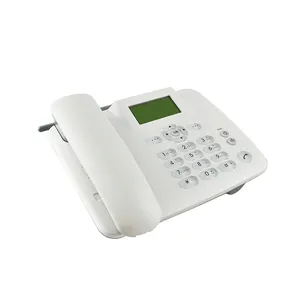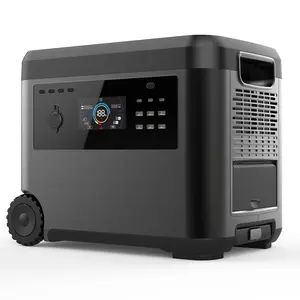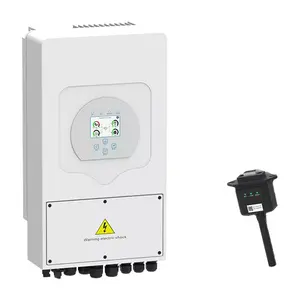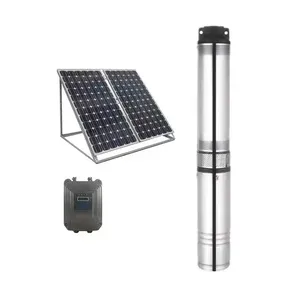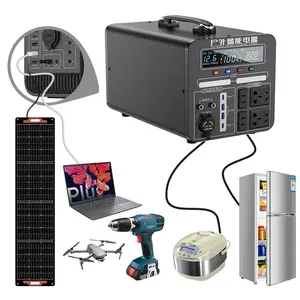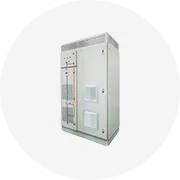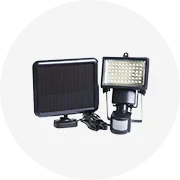Popolare nel tuo settore






Ingrosso batterie al piombo acido Solaire DG12V 100Ah 150AH 200Ah 250Ah ciclo Gel batteria solare profonda
70,46 € - 97,34 €
Ordine minimo: 2 parti






280Ah Lifepo4 280ah batterie ricaricabili agli ioni di litio celle 280ah supercondensatore 3.2v 280ah 240ah batteria Lifepo4
14,40 € - 68,60 €
Ordine minimo: 4 parti
Spedizione per pezzo: 12,57 €







YABO LiFePO4 BMS Lifepo4 batteria 12V 48V 120Ah 150Ah 170Ah 200Ah 300Ah LiFePO4 batteria agli ioni di litio 12V
32,16 € - 557,12 €
Ordine minimo: 1 parte
Spedizione per pezzo: 538,01 €







Batteria al litio 12v 400ah 12v 100ah 200ah 300ah 400ah batteria agli ioni di litio a ciclo profondo pacco batteria Lifepo4
16,69 € - 1.802,98 €
Ordine minimo: 2 parti







Batteria al litio ricaricabile LiFePO4 12V 100ah 200Ah 250Ah per sistemi di accumulo di energia solare pacchi batteria li ion RV golf cart
162,23 €
Ordine minimo: 2 parti
Spedizione per pezzo: 210,89 €







12v 200ah deep cycle 12v 250ah lifepo4 12v 300ah batteria 500ah per sistema di energia solare
556,19 € - 732,32 €
Ordine minimo: 2 parti







Batteria al GEL di accumulo di energia solare Ritar 12V 100Ah 120Ah 150Ah 200Ah 250Ah batterie al piombo sigillate AGM a ciclo profondo
63,97 € - 83,43 €
Ordine minimo: 10 parti






12v 200ah 12v 230ah Per sistemi di alimentazione del sistema solare ciclo Profondo VRLA piombo acido AMG GEL di stoccaggio della batteria
46,35 € - 55,62 €
Ordine minimo: 1 parte






Batteria Agm a ciclo profondo 12V 100ah 150ah 200ah 250ah 300ah batteria di alimentazione domestica
54,70 € - 119,59 €
Ordine minimo: 2 parti
Spedizione per pezzo: 128,16 €






Batteria al litio AGM GEL batteria al piombo sigillata a ciclo profondo 6V 12V 48v 200AH 250AH batteria solare
53,77 € - 55,62 €
Ordine minimo: 2 parti
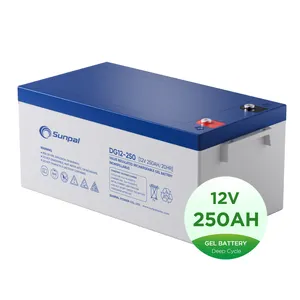





Ciclo profondo Gel solare batterie al piombo acido 12V 200Ah 250Ah impianto di produzione di accumulo solare
64,89 € - 91,78 €
Ordine minimo: 5 parti






Batteria al piombo ricaricabile 12V 100Ah 200Ah 250Ah 300Ah batteria solare solare del ciclo profondo del solare
52,84 € - 106,61 €
Ordine minimo: 20 parti
Spedizione per pezzo: 1.202,39 €
Ricerche correlate:
batteria solare a ciclo profondo 12v 150ahbatteria solare a ciclo profondo 12v 1000ahbatteria solare a ciclo profondo 12v 20ahbatteria solare a ciclo profondo 12v 100ahbatteria solare a ciclo profondo 12v 2000ahbatteria solare a ciclo profondo 12v 2020ahbatteria solare a ciclo profondo 12v 220ahbatteria solare a ciclo profondo 12v 50ah12v 90ah batteria solare a ciclo profondobatteria solare del ciclo profondo di 12v 85ahbatteria solare a ciclo profondo 2v 1000ahbatteria solare del ciclo profondo di 24v 200ahbatterie solari a ciclo profondo 48v 50ahbatteria solare a ciclo profondo 8v 200ahbatteria solare a ciclo profondo 12v 150a






WHC batteria al Gel al piombo a ciclo profondo 12V 24V 100AH 120AH 250AH a lunga durata 12V 200AH batteria solare AGM 12V
92,70 € - 203,94 €
Ordine minimo: 10 parti
Spedizione per pezzo: 351,90 €





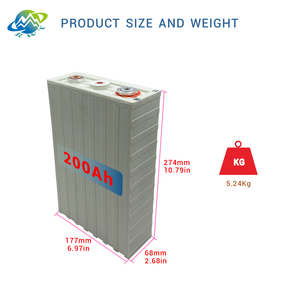
RWT deep cycle LiFePO4 3.2V 138Ah 160Ah 176Ah 180Ah 200Ah 230Ah 250Ah 500Ah Hong Sifang Series 48v 200ah batteria solare al litio
19,47 € - 23,18 €
Ordine minimo: 4 parti






Batteria al GEL di accumulo di energia solare 12V 100Ah 150Ah 200Ah 250Ah batterie al piombo sigillate AGM a ciclo profondo
91,78 € - 116,80 €
Ordine minimo: 8 parti






24V 250Ah 300Ah batteria di accumulo solare a ciclo profondo GEL 48V 12V 250Ah batterie al piombo
91,78 € - 147,39 €
Ordine minimo: 2 parti






OEM Gel sistema di accumulo di energia solare ciclo profondo AGM 12V 100ah 120ah 150ah 200ah 250ah prezzi della batteria Ce gratuito
86,21 € - 92,70 €
Ordine minimo: 2 parti






Batteria di accumulo di energia batteria al Gel solare batterie al piombo 12V 100ah 150AH 200AH 250AH 3 anni batteria al Gel a ciclo profondo CE/ISO
46,35 € - 78,80 €
Ordine minimo: 10 unità
Spedizione per pezzo: 233,71 €






Ciclo profondo batteria gel agm acido piombo 12v 50ah 100ah 150ah 200ah 250ah batterie tubolare applicazione residenziale di accumulo di energia
72,31 € - 90,85 €
Ordine minimo: 2 parti
Spedizione per pezzo: 82,48 €






Sunpal ciclo profondo batteria Gel energia solare 12V 250Ah 200Ah 100Ah acido piombo Agm batterie Solaire cina
57,48 € - 68,60 €
Ordine minimo: 20 parti






Mate tubolare batterie solari piombo acido 12V 100Ah 150Ah 200Ah 220Ah 250Ah ciclo di Gel solare profondo prezzo della batteria In Pakistan
90,39 € - 94,56 €
Ordine minimo: 2 parti






5 anni di Garanzia Profonda del Ciclo Gel Solare Batteria 12V 100Ah 150Ah 200Ah 250Ah1000Ah con 4*12V 250Ah
165,93 € - 186,33 €
Ordine minimo: 10 parti






Batteria al litio solare lifepo4 a ciclo profondo 12v 24v 48v 100ah 150ah 180ah 200ah
63,04 € - 435,68 €
Ordine minimo: 1 parte
Spedizione per pezzo: 778,67 €






200AH 250AH 300AH VRLA 12 volt 200 amp ciclo profondo gel batteria 12 v 200ah sistema solare casa batteria migliori batterie per il solare
115,88 € - 125,15 €
Ordine minimo: 8 parti
Spedizione per pezzo: 69,53 €






10X Più A Lungo! Bms 12v ciclo profondo batteria agli ioni di litio per impianti solari 12v 200Ah 12v 250Ah batteria al litio
128,85 € - 434,76 €
Ordine minimo: 2 parti






EITAI ciclo profondo di manutenzione senza piombo acido solare Vrla 12V 100Ah 150Ah 200Ah 250Ah Gel batteria
37,08 € - 46,35 €
Ordine minimo: 2 insiemi






Ingrosso ciclo profondo 12V 100Ah 120Ah 150Ah 200Ah 250Ah batteria al piombo Gel acido Agm per la casa batteria al piombo-acido GEL solare
42,65 € - 46,45 €
Ordine minimo: 2 parti






Batteria solare a ciclo profondo ricaricabile AGM a lunga durata 12V 5Ah 7AH 9Ah 10Ah 20Ah
4,64 €
Ordine minimo: 200 parti
Spedizione per pezzo: 100,00 €





Di alta qualità di piombo acido solare inverter di potenza gel batteria profonda del ciclo agm 12v 250ah
161,30 € - 194,67 €
Ordine minimo: 1 unità






Inverter Batteria Solare 100Ah 200Ah 250Ah 12V Ciclo Profondo Piombo Acido Agm Gel Batteria Prezzo di Fabbrica
69,53 € - 91,78 €
Ordine minimo: 2 insiemi
Spedizione per pezzo: 92,03 €






Brillante di alta qualità 12v 250ah ciclo profondo gelificato batteria
148,32 € - 166,86 €
Ordine minimo: 50 parti






Giftsun 12V volt Home Power GEL solare batteria 50Ah 100Ah 150Ah 250Ah batterie Solaire ciclo profondo batteria al piombo acido AGM
13,91 € - 50,99 €
Ordine minimo: 20 unità
Spedizione per pezzo: 1.265,33 €






12V 100AH 150AH 200AH 250AH 300AH ciclo profondo AGM Gel solare tipo sigillati batterie Inverter per auto e UPS applicazione
32,45 € - 60,26 €
Ordine minimo: 2 parti
Spedizione per pezzo: 1.049,36 €






10 anni di vita 12v 250ah agm batteria profonda del ciclo per il pannello solare
171,50 € - 203,94 €
Ordine minimo: 20 unità






Senza Manutenzione 12v 100AH 200ah 250ah Batteria Ricaricabile batteria Profonda del Ciclo 12v 120ah Inverter Batteria al Gel Per Il Sistema Solare
69,53 € - 78,80 €
Ordine minimo: 10 insiemi






Ciclo profondo solare batterie al piombo Gel acido 12V 200Ah 250Ah 300Ah per il 3000 cerchio di vita
106,61 € - 125,15 €
Ordine minimo: 2 parti
Spedizione per pezzo: 146,08 €






12V 50Ah 100Ah 150Ah 180Ah 200Ah 250Ah ciclo profondo GEL batteria per la nuova energia solare ricaricabile
55,82 € - 79,01 €
Ordine minimo: 10 parti
Spedizione per pezzo: 22,72 €






Bluesun Profonda del Ciclo Gel Solare Batteria 12v 100ah 150ah 200ah 250ah Gel Agm Batteria Per Il Sistema Solare
89,92 € - 101,05 €
Ordine minimo: 50 parti






Ritar 12V 250AH batteria solare 12V 100AH batterie a ciclo profondo 12V 200AH batteria al GEL 200ah
139,05 € - 194,67 €
Ordine minimo: 10 unità






Di alta qualità gel batterie profonde del ciclo solare 12V batteria al gel di 250AH
187,25 € - 196,52 €
Ordine minimo: 25 parti
Migliori categorie
Su batteria solare a ciclo profondo 12v 250ah
Alibaba.com è sempre stato il fulcro di fornitori e prodotti elettronici efficienti e questa volta lo stesso vale per gamme eccezionali di. batteria solare a ciclo profondo 12v 250ah. Puoi trovare una vasta gamma di strumenti potenti, efficienti e di lunga durata. batteria solare a ciclo profondo 12v 250ah sul sito offerto dai principali fornitori e grossisti ai prezzi più convenienti. Queste. Le batteria solare a ciclo profondo 12v 250ah sono ideali per tutti i tipi di utilizzo e sono considerate le più potenti nel mantenere la carica per un lungo periodo di tempo.
Le solide collezioni di. Le batteria solare a ciclo profondo 12v 250ah disponibili sul sito sono sigillate e vengono fornite con materie prime di pura qualità per durare a lungo e fornire prestazioni costanti. Queste. Le batteria solare a ciclo profondo 12v 250ah sono sicure da usare e possono funzionare bene in tutti i tipi di condizioni meteorologiche. Questi prodotti sono realizzati utilizzando le tecnologie più avanzate e sono disponibili in distinte varianti. A seconda dei requisiti e del tipo di utilizzo, è possibile selezionare dall'ampio ambito di. batteria solare a ciclo profondo 12v 250ah con il loro insieme unico di capacità di alimentazione.
Alibaba.com ti offre una collezione esagerata di. batteria solare a ciclo profondo 12v 250ah destinati all'uso in giocattoli, automobili, biciclette / scooter elettrici, carrelli elevatori elettrici, sistemi di alimentazione elettrica e così via. Le batteria solare a ciclo profondo 12v 250ah sono leggere, dotate di terminale in rame e offrono periodi di garanzia più lunghi che garantiscono la massima tranquillità durante l'utilizzo. Puoi anche trovare versioni solari di questi. batteria solare a ciclo profondo 12v 250ah che possiedono caratteristiche di scarica a lungo termine, migliore immagazzinamento di energia e maggiore efficacia di ricombinazione del gas.
Acquista questi prodotti entro il tuo budget finanziario passando attraverso l'ampia gamma di. batteria solare a ciclo profondo 12v 250ah per soddisfare le tue esigenze. Questi prodotti sono certificati CE, UL ROHS e sono disponibili con imballaggi personalizzati per acquisti all'ingrosso. Questi articoli sono disponibili anche come ordini OEM.
Le solide collezioni di. Le batteria solare a ciclo profondo 12v 250ah disponibili sul sito sono sigillate e vengono fornite con materie prime di pura qualità per durare a lungo e fornire prestazioni costanti. Queste. Le batteria solare a ciclo profondo 12v 250ah sono sicure da usare e possono funzionare bene in tutti i tipi di condizioni meteorologiche. Questi prodotti sono realizzati utilizzando le tecnologie più avanzate e sono disponibili in distinte varianti. A seconda dei requisiti e del tipo di utilizzo, è possibile selezionare dall'ampio ambito di. batteria solare a ciclo profondo 12v 250ah con il loro insieme unico di capacità di alimentazione.
Alibaba.com ti offre una collezione esagerata di. batteria solare a ciclo profondo 12v 250ah destinati all'uso in giocattoli, automobili, biciclette / scooter elettrici, carrelli elevatori elettrici, sistemi di alimentazione elettrica e così via. Le batteria solare a ciclo profondo 12v 250ah sono leggere, dotate di terminale in rame e offrono periodi di garanzia più lunghi che garantiscono la massima tranquillità durante l'utilizzo. Puoi anche trovare versioni solari di questi. batteria solare a ciclo profondo 12v 250ah che possiedono caratteristiche di scarica a lungo termine, migliore immagazzinamento di energia e maggiore efficacia di ricombinazione del gas.
Acquista questi prodotti entro il tuo budget finanziario passando attraverso l'ampia gamma di. batteria solare a ciclo profondo 12v 250ah per soddisfare le tue esigenze. Questi prodotti sono certificati CE, UL ROHS e sono disponibili con imballaggi personalizzati per acquisti all'ingrosso. Questi articoli sono disponibili anche come ordini OEM.
